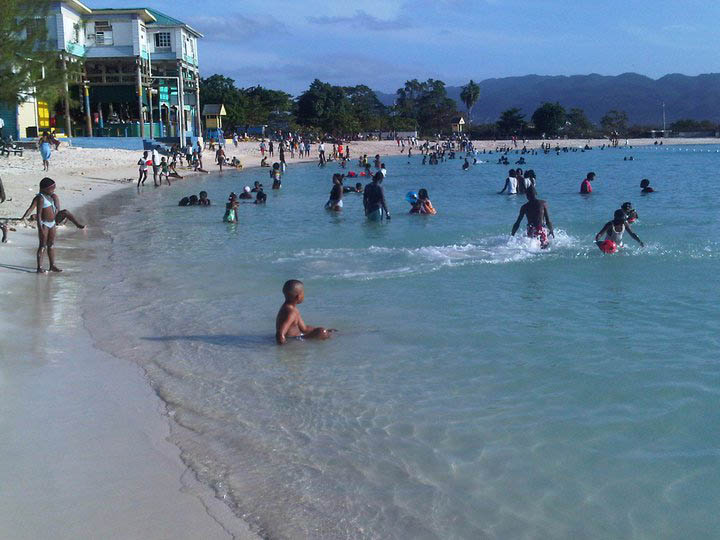Just how lucrative the returns can be for Caribbean countries from the tourism industry can be measured through the fortunes of Jamaica’s Tourism Enhancement Fund (TEF). Jamaica dwells in a geographic space that renders the country much more accessible to the heavy seasonal drift of North American tourists to the region but then it has to be acknowledged as well that both the public and private sectors in Jamaica have, over the years, worked pretty hard and spent billions of dollars creating a worthwhile tourism infrastructure and simultaneously marketing the brand just about everywhere.
Here in Guyana, the rising global popularity of eco-tourism renders our own product as potentially competitive as any in the world today. Up until now however, we have not sought to emulate Jamaica in investing in product development and product promotion. Rather, we have been, over the years, rather more glib in ‘mouthing off’ about our tourism potential whilst, over time, turning a blind eye to environmental despoilers who have been steadily eroding the value of our tourism product.
Recently, we monitored a newspaper report out of Kingston, Jamaica which suggests that the hard work which Jamaica has put in to build a tourism industry has been paying handsome dividends, not least of which are the returns being derived from the sector by the country’s Tourism Enhancement Fund (TEF). That report suggests that the 14 year-old TEF has, over time, pumped an excess of J$36 billion into projects intended to both improve Jamaica’s tourist product and to retain more of the earnings from the sector.
The TEF, we are told, has come to be known for its multi-billion-dollar backing of a host of tourism-related initiatives including a raft of entrepreneurial ventures, clean-ups and job training. It has done so while simultaneously contributing more than $15 billion in revenue and investments to Jamaica’s Consolidated Fund, the Government’s Central Treasury. Apparently, the good fortune which the TEF has enjoyed over the years has attracted the wider attention of the state so that a law was passed two years ago mandating the transfers to the state coffers. Over that period Jamaica’s Tourism Enhancement (Amendment) Act of 2017 has secured $13.2 billion in fees from the TEF accounts, which amount comes from a $20 per passenger charge on airline visitors to Jamaica and a $2 per person charge for cruise passengers. That tells us something about the number of visitors that arrive in Jamaica both by sea and air.
We are told that similar legislation around the same time required other public bodies including the country’s CHASE Fund which was set up to receive a tax on lottery winnings; and the Jamaica Civil Aviation Authority, to surrender their revenues to the central authorities and afterwards to receive monthly subventions against an annual budgetary allocation from the government to finance their particular operations.
The amount levied on the TEF for the current fiscal year is reportedly $3.7 billion, down from $4 billion in fiscal year ending March 2019, but still a ‘pretty penny’ that can be pumped into one tourism-related development or the other. Incidentally, there are other state agencies responsible for implementing TEF-funded projects that now receive monies directly from the central government and no longer from the TEF.
One of the TEF’s largest current projects is the development of the $1.3 billion Closed Harbour Beach, popularly known as Dump Up Beach in Montego Bay, a leading resort, being done in collaboration with another state agency, the Urban Development Corporation. TEF is also funding a sidewalk upgrading initiative in Jamaica’s famous resort town of Ocho Rios.
None of this, of course, can materialise overnight. It can only be derived from a carefully planned and sustained tourism industry that is buttressed by a sound and ambitious marketing plan and a management system that is mindful of ensuring that the tourism infrastructure is equipped with resources that enables it to offer the best services to visitors.
While recent initiatives driven mostly by the Guyana Tourism Authority (GTA) to shore up the sector has given rise to chatter about raising the country’s eco-tourism profile, the prevailing visitor arrival numbers suggest that the sector still has a long road to travel. The need for aggressive global marketing apart, there also exists the need for the enhancement of the country’s urban infrastructure which, over time, has been hamstrung largely through the indifference of the coastal municipalities. What sometimes appears to be the assumption that the focus of an eco-tourism drive in the interior regions obviates the need to pay attention to urban infrastructure is challenged by the reality that while visitors to the country may be largely interested in hinterland pursuits, urban architecture, leisure facilities and cuisine are still major attractions and high-class hotels will continue to be drawing cards.
One of the reported criteria used by the TEF for selecting projects for funding is the extent to which they ensure that locals earn from the tourism industry. Funding is reportedly linked to the integration of tourism into other key sectors of the Jamaican economy including agriculture, manufacturing, sport and entertainment.
A training institute, the Jamaica Centre for Tourism Innovation, receives $80 million in TEF funding annually to help get more of the tourism spending into the hands of Jamaicans by training and certifying persons for top jobs in the sector.
One of the ways in which the TEF measures its success is through tourism dollar retention in the local economy, which has reportedly grown from 30 per cent a couple years ago to a current 40.8 per cent, according to the World Travel and Tourism Council data.










